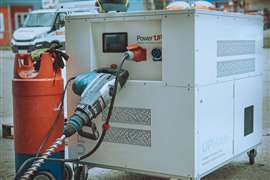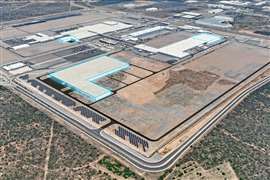Policymakers can play crucial role for cement
27 March 2013

The importance of the cement industry to Europe was highlighted in Brussels at the launch of a study which outlines the competitiveness of the cement industry, and its role in helping Europe “achieve its goals of developing a sustainable, resource-efficient and innovative society”.
Speaking at the launch of the report, Daniel Calleja Crespo, director general of the European Commission’s DG (Directorate General) Enterprise, emphasised “the importance of the cement industry to Europe and to the sustainable functioning of our economy”.
The cement sector study was produced by the Boston Consulting Group (BCG) and was commissioned by Cembureau, the European cement association.
Ignacio Madridejos, Cembureau’s president, said, “We are pleased to see that the focus of the European institutions, including the European Commission, is precisely on ways to enhance Europe’s competitiveness.
“Through our innovative products and processes, we are confident that cement and concrete can be positioned as the products of choice for construction; as locally-sourced and produced products, they will help build Europe’s infrastructure that protects people, property and environment.”
Introducing the report, Ramón Baeza of BCG said the report highlighted that the European cement and concrete industry contributed a total production value of €74 billion to the economy.
The report said that with a growing population in Europe, more sustainable cities which provided access to affordable, energy-efficient housing were essential, along with efficient transport systems.
It said this growth had to be harnessed in a sustainable manner, by taking into consideration the environmental and social impacts.
“In order for this to be achieved,” said the report, “Europe will require an innovative industry that commits to the region on a long-term basis. For this to occur, Europe will need to reactivate its industrial base in the short term, in order to foster economic growth and jobs.”
Stong industrial base
From the European Commission perspective, Mr Calleja Crespo said, “Europe needs an industrial policy in place that will support the economic recovery and help to keep a highly competitive, diversified and strong industrial base in Europe.”
The report noted that the industry played a vital role in generating growth, saying that investment in infrastructure had one of the highest multiplier effects on the economy. It added that for every new job created in construction, two additional jobs were created elsewhere in the economy.
The recent financial crisis was seen to have taken its toll on the European Cement Industry.
The report said, “Currently, this strategic sector is not obtaining reasonable terms, as average return on capital over the last four years have been between 3% and 5% below the cost of capital.”
It said this had, to some extent, been a result of outside factors and elements imposed on the industry, pointing out that to meet environmental legislation in Europe, major investments and operating costs had to be faced.
Cement, according to the report, has been one of the few energy-intensive materials that has seen its prices fall, by 13% between 2007 and 2011, despite a rising cost base of between 6% and 26% during the same period.
The report said that both industry and policymakers had to work together in order to identify actions to address the current challenges faced by the sector.
“The European cement industry is at a disadvantage versus other regions,” said the report, “as it faces higher capital requirements and operation costs, must meet more stringent environmental regulation, and lacks a correct legal framework that facilitates plant rationalisation in economically, environmentally and socially-acceptable circumstances.
“These competitive disadvantages mean that the industry is unable to compete with the export market, to improve its returns in Europe, and is also unable to take action to rationalise capacity.”
It said that within this context, policymakers could play a crucial role in helping maintain a competitive industry in Europe through a consistent and predictable legal framework which allowed for long-term investment planning and integrated economic, environmental and social considerations within a co-ordinated and consistent industrial policy at European level.
It also said the policymakers could help create the right regulators incentives to drive growth, as well as a level playing field for regulatory requirements. This would be to see that all competing players were subject to the same impositions across the region, while ensuring that European players were not at a disadvantage when facing competition from outside the region.
It said the cement industry would clearly benefit from continued investment in Europe “as the region is characterised by a stable political regime, firmly grounded in its respect for democracy and the fundamental principles of law; access to a skilled labour force; and the availability of a well-developed port, rail and road infrastructure”.
Focus on competitiveness
Koen Coppenholle, chief executive of Cembureau, said, “With this study, Cembureau aims to put itself at the heart of Europe’s priorities, and that is the focus on competitiveness, growth and jobs.
“Both industry and policymakers must, therefore, work together in order to identify actions to address the current challenges faced by the sector.”






